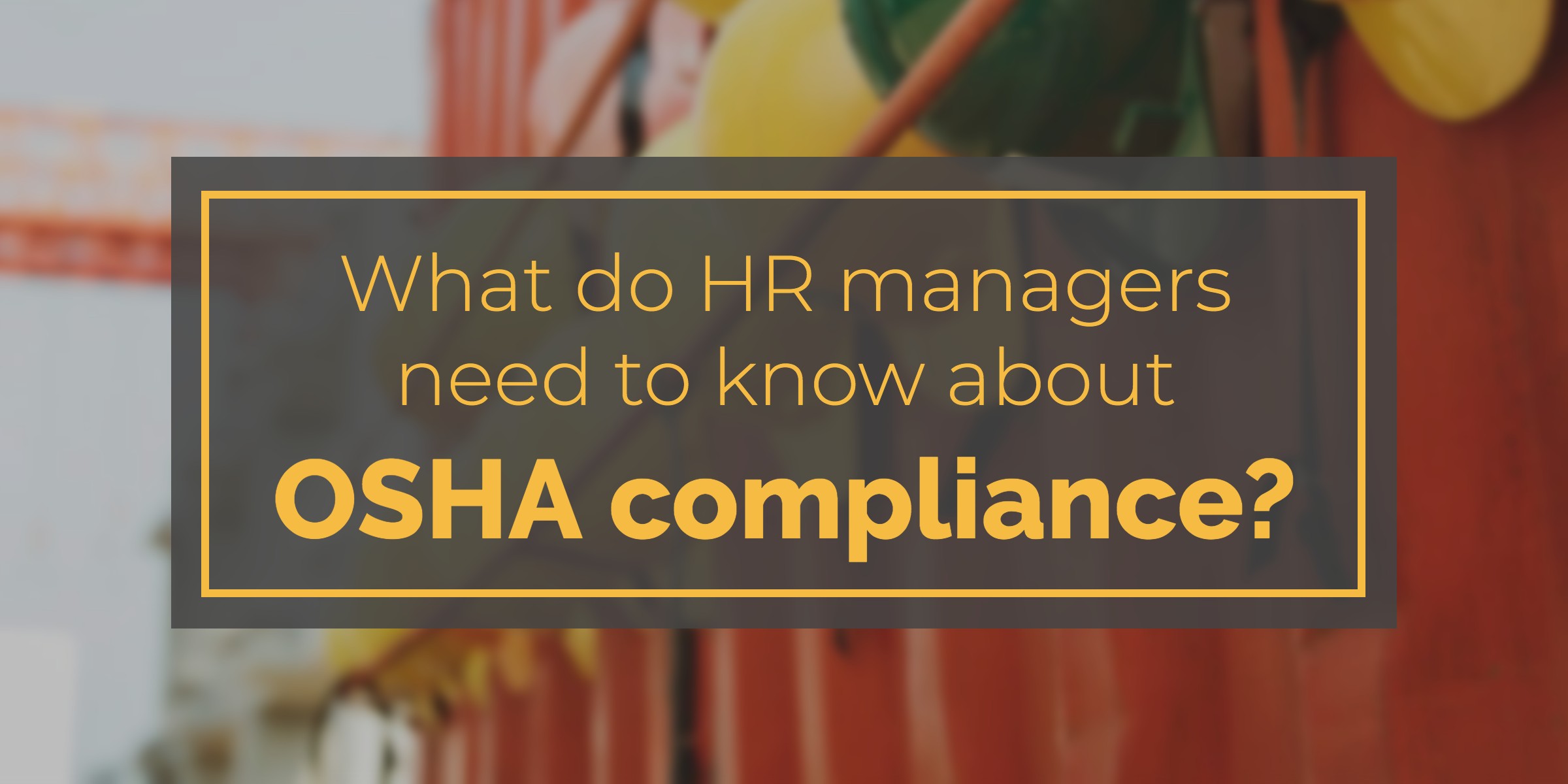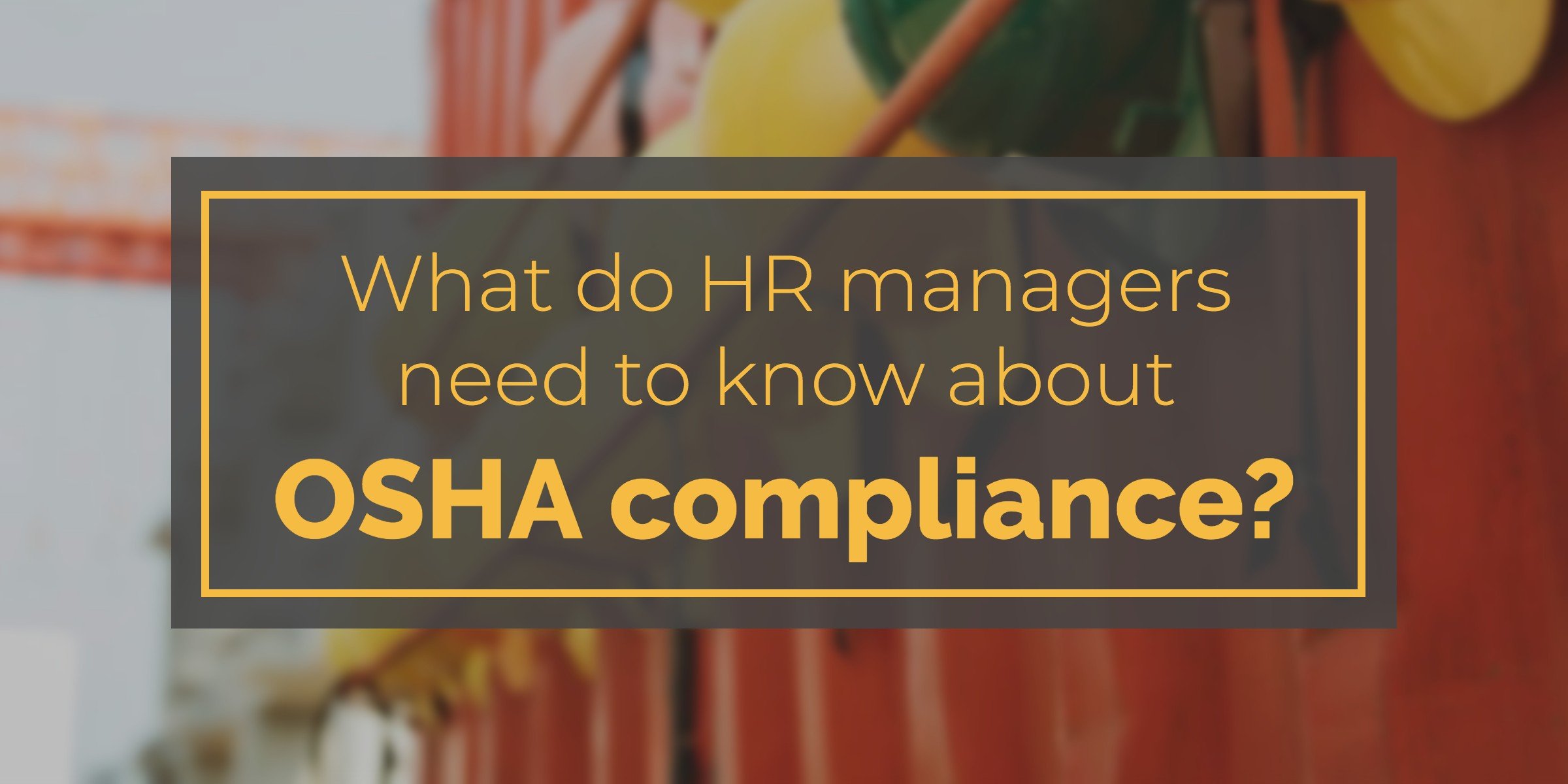
The Occupational Safety and Health Administration (OSHA), which falls under the larger umbrella of the Department of Labor, guarantees workers the right to a safe and sanitary working environment and lays out guidelines to help employers achieve this goal. These requirements include safety training, reporting, and anti-retaliation protections for employees who report unsafe working conditions, among others.
In larger companies, there may be one or several people whose job is to maintain workplace safety and comply with OSHA regulations. But in smaller organizations, some of the work of training, record-keeping, and reporting may fall to HR managers.
Even if you don’t work in a particularly hazardous industry, it’s important to familiarize yourself with what OSHA requires of all workplaces. While some of these requirements may feel onerous on top of your ordinary job duties, the cost of noncompliance can be steep. Employee safety incidents take a toll on workplace productivity and employee engagement, raise insurance premiums, and put companies at risk of OSHA penalties for each violation.
Here’s what you need to know to stay compliant with OSHA guidelines:
Safety training
One key component of OSHA compliance is providing employees with adequate safety training. According to OSHA’s updated training requirements document, “Training in the safe way for workers to do their jobs well is an investment that will pay back over and over again in fewer injuries and illnesses, better morale, lower insurance premiums and more.”
As an HR manager, you may not be familiar with the specific safety needs in each role at your company. However, since training employees falls under HR’s purview, you should at least be able to train employees on general workplace safety. It’s also a good idea to touch base with managers to ensure that they’re giving employees ample training in the particular safety requirements of their individual roles.
When you’re building or refining your safety training game plan, here are a few things to keep in mind:
- Training plans should include information about what to do in emergency situations (including how to exit the building and how to report incidents), what to do if an OSHA inspector visits the workplace, and how to handle hazardous substances and/or blood-borne pathogens (if applicable).
- Employers should provide training in a language and vocabulary that all employees can understand. This means if employees speak a language other than English, have limited vocabulary, or are not literate, employers need to provide appropriate training materials or methods that ensure workers get the information they need.
- Employers should prominently display the official OSHA “Job Safety and Health— It’s the Law!” poster, which outlines employee rights and employer responsibilities under the OSH Act.
- Employers should make workers aware of their rights, and ensure that there is no retaliation or discrimination against those who report workplace injury or illness.
Record-keeping
A crucial component of OSHA compliance is accurate record-keeping about workplace injuries or illnesses. These records aren’t just necessary for appropriate end-of-year reporting— they can also help employers make process improvements that reduce the number of safety-related incidents.
There are three OSHA forms you need to know:
- Form 300: a log of work-related injuries and illnesses
- Form 300A: a summary of work-related injuries and illnesses
- Form 301: an injury and illness incident report
As soon as any safety incident takes place, be sure to complete an Injury and Illness Incident Report (OSHA Form 301) and log it on the overall OSHA Form 300. This document can help your company perform workplace safety evaluations, identify repeated hazards, and create additional safety precautions. It can also be useful should you ever need records for safety investigations or claims. In the event of an OSHA inspection, Form 300 will generally be the first document you’ll be asked to provide. Failure to maintain and present it can result in a hefty fine of up to $8,000 for each year of violation.
Reporting
At the end of the calendar year, the information from Form 300 should be used to fill out Form 300A. This form must be electronically filed with OSHA by March 2 of the following year, and it should also be displayed prominently between February 1 and April 30.
In addition to this summary of incidents, there are certain cases that require more immediate reporting to OSHA. Any workplace fatality must be reported to OSHA within 8 hours, and any hospitalization, amputation, or eye loss must be reported within 24 hours.
Additional information
These are the main requirements of OSHA compliance that might affect HR managers, but they by no means cover all the complexities or contingencies some workplaces may face. To learn more about employers’ workplace safety responsibilities, or to get an idea what an inspection might involve, be sure to read more on the OSHA website.


